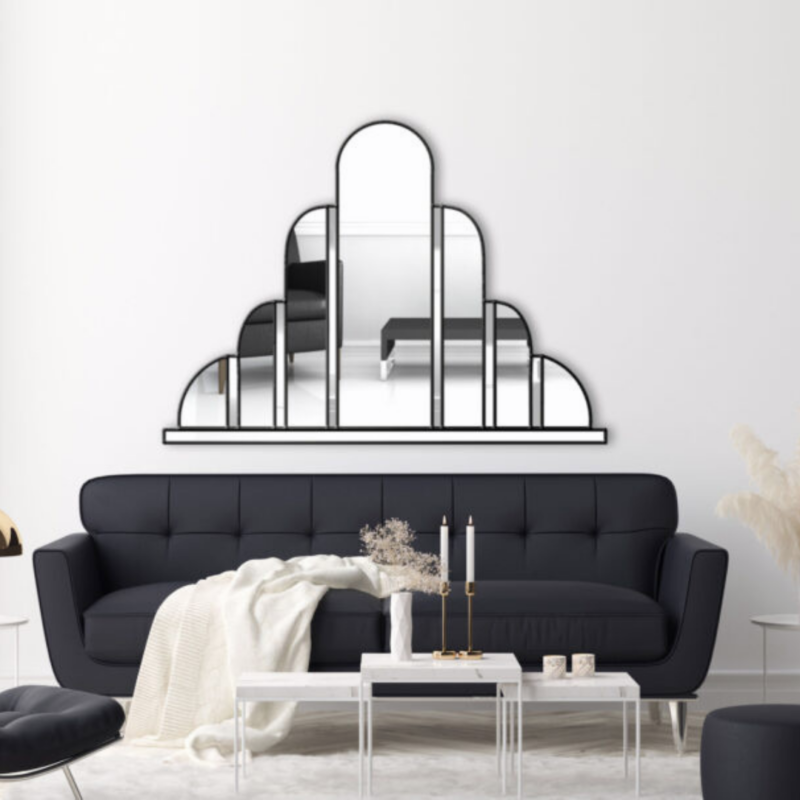Mirror Mania News
The Fascinating History of Art Deco Design
Full article with thanks to https://www.housebeautiful.com/design-inspiration/a31188600/art-deco-design/
And how it still prevails in contemporary spaces today.
Anyone who appreciates architecture and design—or even anyone who just loves period pieces like The Great Gatsby and Chicago—has probably gone through an Art Deco obsession phase. From the elaborate materials to the mesmerizing geometric shapes that define the aesthetic, it’s one of the most enduring, distinct, and exciting design movements ever. Well, at least in my opinion.
So when I was invited to go on an Art Deco walking tour with Los Angeles Conservancy, I couldn’t wait to extend that loose appreciation into something a bit more informed. And as an emerging hub of commerce and culture in the early 20th century, Downtown Los Angeles was the perfect place to learn more about the movement. Naturally, I took plenty of notes. So keep reading to learn about the history and characteristics of Art Deco design and architecture, and then get inspired by modern interpretations of the iconic style to incorporate into your own interiors.
History of Art Deco Design
The Early Days (the early to mid 1920s): New Moderne (the term for Art Deco until it got the catchier moniker in the 1960s) became popular at the French exposition in 1920 as a backlash against the more traditional designs that were so popular at the time. The movement, which grew out of the more decorative Art Nouveau, combined many styles of the time, including Cubism and Viennese Succession. Art Deco began to take off within the fashion and jewelry industries, which then began influencing furniture design, which then also informed the architectural movement. Deco architecture was intrinsically tied to art and social movements of the time: the Biltmore in Los Angeles and the Waldorf Astoria in New York City, both iconic Deco buildings, were the social centers of their cities in the early 1920s and attracted artists and intellectuals.
At Its Peak (the mid 1920s): While stylish buildings at the onset of the 1920s often featured coffered ceilings with flat, horizontal roofs, more and more cities were growing vertically to accommodate growing business and concentrated urban environments. Fittingly, many say the motto of Art Deco design was “Master the Sky.” Art Deco was all about moving away from the past and paving a new way for the future, culturally and aesthetically, which meant keeping some decorative elements but also giving them a sleeker, cosmopolitan twist. As such, many Art Deco buildings wear a “tiara,” the nickname for floors that aren’t leasable spaces (speaking to the decorative value of design that this movement really pioneered). Tiaras make the buildings taller and distinctive, inviting you to look up.
Like the quintessential markers of the 1920s and the Jazz Age, Art Deco was shaped by the gradual loosening up of culture in general, with an emphasis on fun, expression, and excess. This attitude belied a dark underbelly (the depression and the onset of a second World War).
Late Deco (the1930s): The crash of the stock market in 1929 resulted in a pivot away from the elaborate, decorative styles of earlier Art Deco design, which reflected faith in technological and economic growth. For most buildings, funding slowed down or stopped altogether, and that’s when Streamlined Moderne, a much simpler interpretation of Art Deco design, took off. Visually, these styles were known for reverting back to the more horizontal orientations and were much simpler, as any kind of ostentatious displays were considered bad form.
That’s why you’ll see a ton of buildings that look more streamlined everywhere but the bottom levels; as funding slowed, architects would emphasize awnings and marquees. And if they were redoing older buildings, they would focus on the bottom level facing the street.
Deco’s Legacy Today: In most cities during the 1920s, downtown was still the epicenter of life, so most of the arts were found in those neighborhoods, which meant they also got more funding. As wealth began moving to suburbia after World War II, people relied less on downtown shops and resources, so they got less funding. As a result, many of those crowned jewels of Art Deco architecture fell into disrepair.
Today, many Art Deco buildings exemplify adaptive reuse, an approach to development that reimagines existing spaces with new functions—say, turning a one-time department store into condo housing.
Key Art Deco Characteristics
Motifs: Flattened and stylized geometric motifs like fans and flowers; abstract patterns like chevron and sunbursts; jagged lines (a precursor to the Brutalist styles on the horizon).
Materials: Lacquer, mirror, polished wood, brass, metal, terra cotta, chrome, colorful glass.
Colors: Lots of high contrast combinations, bold, moody, and deep colors, balanced by softer nudes.
Full article with thanks to https://www.housebeautiful.com/design-inspiration/a31188600/art-deco-design/


